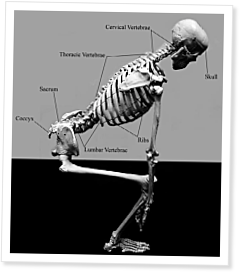
Trainers are in the business of creating fitness. They apply exercises to their clients in order to induce adaptations in structure and function that lead to improved fitness. In order to do this effectively, reliably and safely, working trainers must understand the structures they are stressing with exercise to produce the functional change that is fitness. This is the primary reason we learn anatomy and physiology. We need to understand the materials we work with in our occupation in order to accomplish the job we are expected to deliver.
Secondarily, there are communication reasons for learning structures and functions. Anatomy and physiology form a common language that connects the trainer, the therapist, the clinician and the client. We must learn our profession inside out to earn the respect and recognition due an expert.
Understanding how something is built will help you understand how it works. The biological and engineering adage “form equals function” is quite important in exercise and fitness. When we want to get better at an exercise we need to understand how the structure of the body contributes to its performance.
The best place to start in the study of what makes a human move is learning the bones and muscles that actually allow movement—in that order. The bones form a moveable scaffolding that allows the muscles attached to it to create gross (large scale) and fine (small scale) movement. Everything we do in the gym, at work, at play and in daily life is dependent on the ability of the muscles to move two or more bones through their ranges of motion.
No comments:
Post a Comment